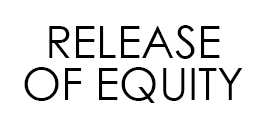For many people, the prospect of a retirement is a fairly bleak one. More often than not, the payments received from a pension fund are significantly less than a monthly salary, and this means that once working life is over, the circumstances call for a change in lifestyle.
If you have found yourself contemplating a reduced income during retirement, you will doubtless be keen to remedy this situation. Your research in this field is bound to have brought you into contact with the reverse mortgage, and you are likely to be considering it as a potential option.
Before you make any hard and fast decisions, it is important that you understand the fundamental principles governing this kind of financial plan since, like anything, it has positive and negative features – both of which you will want to take into account. The reverse mortgage is, essentially, a variation on the British equity release scheme.
It is a policy available to people over a certain age, and it allows participants to borrow money against their property. Unlike a conventional loan, the reverse mortgage does not need to be repaid. Instead, the debt remains uncollected until the borrowers move out of their homes, or at the end of their lives.
Once the borrower is no longer resident in his or her property for whatever reason, the lending party will then sell the house and the money gained in this transaction is used to settle the outstanding loan. Thus, the reverse mortgage is a, at heart, the same kind of plan as UK equity release: it is governed by a strict minimum age criterion and it allows people to free up useful capital that would otherwise remained tied up in valuable assets.
